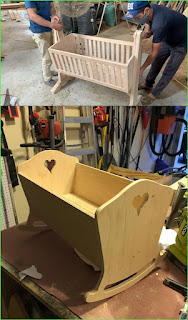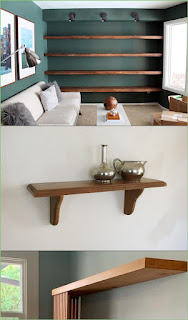Building Your Dream Desk: A Custom Woodworking Project
So, you're thinking about building a custom desk? Awesome! There's nothing quite like the satisfaction of crafting something beautiful and functional with your own two hands. And a desk? That's a piece of furniture you'll use every single day. This isn't just a project; it's an investment in your comfort and workspace. Let's dive into making your dream desk a reality!
Planning Your Perfect Desk: Size, Style, and Materials
Before you even touch a saw, you need a solid plan. This isn’t about grabbing some lumber and hoping for the best. We’re talking about precision and personalization. The first step is figuring out exactly what you need from your desk.
Measuring Your Space and Needs
Grab a tape measure and head to where your desk will live. How much space do you actually have? Don't just eyeball it â€" measure the width, depth, and any obstructions (like radiators or windows). Consider how much space you need for your computer, keyboard, monitor(s), paperwork, and any other essentials. Do you need extra drawers, shelves, or a monitor riser? Draw a quick sketch with your measurements â€" it’ll be invaluable later.
Choosing Your Style
What kind of vibe are we going for? Modern minimalist? Rustic farmhouse charm? Industrial chic? Your desk's style should complement the overall aesthetic of your room. Browse online for inspiration â€" Pinterest is your friend! Consider the type of wood: oak for a classic look, walnut for a rich, dark tone, maple for a lighter, brighter feel, or pine for a more rustic appeal. Each has its own unique character and workability.
Selecting Your Materials
Beyond the wood itself, you'll need to consider other materials. Will you use metal legs? How about a glass top? Perhaps some built-in cable management? Think about the durability and longevity you want from your desk. Hardwoods are generally more durable than softwoods, but they also come with a higher price tag. Consider your budget and how much time you're willing to spend on the project.
Gathering Your Tools and Materials
Now for the fun part â€" gathering your supplies! Don't worry if you don't have every single tool listed. You can often rent specialized equipment from tool rental stores. However, having a well-stocked workshop definitely speeds things along.
Essential Tools
- Measuring Tape
- Pencil
- Circular Saw or Table Saw
- Miter Saw (for angled cuts)
- Drill
- Screwdriver (both Phillips and flathead)
- Clamps
- Sandpaper (various grits)
- Wood Glue
- Wood Finish (stain, varnish, polyurethane â€" your choice!)
- Safety Glasses
- Hearing Protection
- Dust Mask
Materials List (Example)
This is a *sample* list; your exact needs will vary depending on your design:
- Wood boards (adjust quantity and dimensions to your plan)
- Wood screws
- Dowels (optional, for extra strength)
- Wood filler
- Legs (wood or metal)
- Casters (optional)
- Drawer slides (if adding drawers)
Construction: Building Your Desk
This is where the real woodworking begins! Refer back to your detailed plan constantly. Take your time, be precise, and don’t rush the process. Accuracy in this stage will pay off massively in the end.
Cutting the Wood
Carefully cut your wood according to your measurements. Double-check your cuts before moving on to the next step. Use appropriate safety gear â€" safety glasses and hearing protection are must-haves!
Assembling the Desk
Use wood glue and screws to join the pieces together. Clamps will help keep everything aligned while the glue dries. If you’re using dowels, pre-drill pilot holes to prevent splitting the wood.
Sanding and Finishing
Once the desk is assembled, it's time for sanding. Start with a coarser grit sandpaper and gradually move to finer grits to achieve a smooth surface. After sanding, apply your chosen finish. Follow the manufacturer's instructions carefully. Multiple thin coats are better than one thick coat.
Adding Personal Touches
This is your chance to make your desk truly unique! Consider these fun additions:
- Built-in cable management: Drill holes or create channels to keep your wires tidy.
- Drawers or shelves: Add extra storage space to keep your workspace organized.
- Customizable features: Incorporate a monitor riser, keyboard tray, or other ergonomic features.
- Unique hardware: Choose knobs and pulls that complement your desk's style.
- Inlays or decorative elements: Add a personal touch with wood inlays, etched designs, or other decorative elements.
Frequently Asked Questions
Here are some common questions I get about building custom desks:
How long does it take to build a custom desk?
It depends on the complexity of the design and your experience level. A simple desk might take a weekend, while a more elaborate one could take several weeks.
How much does it cost to build a custom desk?
The cost varies greatly depending on the materials you choose. Hardwoods are more expensive than softwoods, and adding features like drawers or intricate designs will increase the cost.
What if I don't have all the tools?
Many tools can be rented from home improvement stores or tool rental shops. Alternatively, you can consider partnering with a friend who has the necessary equipment.
What type of wood is best for a desk?
Hardwoods like oak, maple, and walnut are durable and long-lasting but can be more expensive. Softwoods like pine are more affordable but may require more maintenance.
Can I build a desk without any woodworking experience?
Yes, but start with a simpler design. There are plenty of beginner-friendly plans available online. Take your time, follow instructions carefully, and don't be afraid to ask for help.
Building a custom desk is a rewarding experience that allows you to create a truly personalized workspace. Remember to plan carefully, gather the right tools, and most importantly, enjoy the process!



















